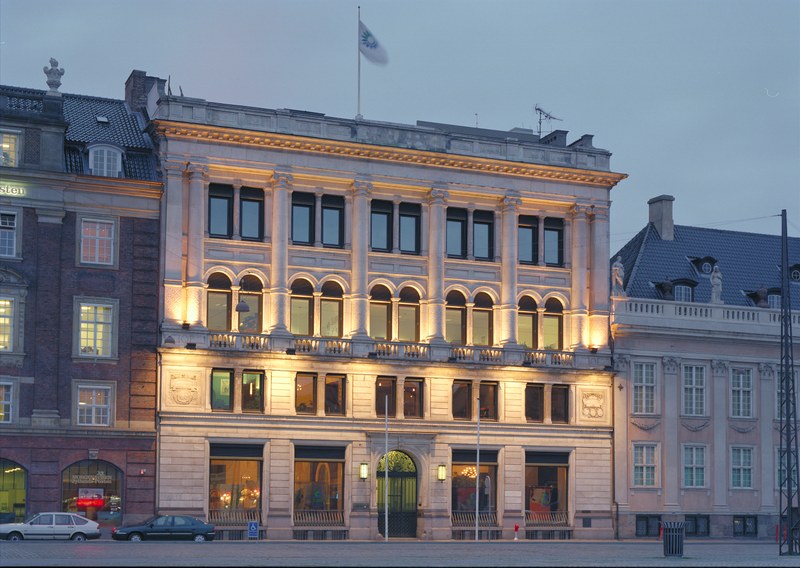The discovered painting believed to be by Jackson Pollock was of American actress Lauren Bacall, wife of Hollywood star Humphrey Bogart. This was announced by the deputy city prosecutor of Sofia, Desislava Petrova.
It said that the canvas was for her birthday. Her real date of birth was also written, and there was a signature, Petrova also pointed out.
“Dedicated to my very talented and dear friend Lauren Bacall, Happy Birthday,” reads the back of the painting along with the date September 16, 1949, and a signature. The date coincides with the actress’ birthday. This was explained by Deputy City Prosecutor Desislava Petrova, spokesperson of the Sofia City Prosecutor’s Office at a media briefing.
Petrova added that so far there is a conclusion and expertise that indicate that the canvas may be original. An analysis of the paint binder would be useful but was not possible at this time. In order to establish whether the canvas is genuine, the tools of international cooperation will also be used.
The Bulgarian who held it indicated that he did not know whether it was authentic or not. Therefore, the process of selling the canvas had not yet started. The painting was not wanted and is not known to have been in Pollock’s catalogue.
Lauren Bacall, born Betty Joan Persky (September 16, 1924 – August 12, 2014) was an American actress and model known for her signature voice. In 1999, the American Film Institute listed Bacall at number 20 on its list of the greatest female stars of classic Hollywood cinema.
Bacall, now deceased, was named one of the 20 most powerful women in Hollywood. She was the wife of the legend Humphrey Bogart for 12 years. Then she had a relationship with Frank Sinatra.
Prosecutor Petrova announced that in connection with the painting, an expert report has been prepared by two experts from the National Art Gallery, as well as expertise made by a three-member commission.
According to her, the expert report says that in terms of style, execution technique and artistic specificity, the painting corresponds to the aesthetic features characteristic of Jackson Pollock’s paintings from the period 1945-1950.
The expert said that the fluorescence analysis carried out, which allowed finding the exact chemical composition of each colour used in the painting, showed that the pigments in it were similar to the pigments used by Pollock in other works. “This is an important but not decisive element to the author’s identification,” the experts add, and say that it would be useful to analyze the binder of the paints, which research requires taking a sample.
Further examination of the seized painting is to be done to determine whether the painting is an original work and a movable cultural asset. The tools of international legal assistance, including European investigation orders, will be used to establish all the circumstances related to the possible movement and path of this painting, prosecutor Desislava Petrova also commented.
It is also yet to be established whether the painting has anything to do with Romania, the prosecutor’s office added, adding that it had not been declared wanted or catalogued.
However, Romania has not yet confirmed the version that the picture has something to do with him.
To BNT, the Romanian art critic and expert on state art collections, Adrian Buga, said that until now, in the archives of the Romanian secret services Securitate, there is no evidence that a painting by Jackson Pollock was part of Nicolae Ceausescu’s collection. The Romanian police have already contacted him for more information on the case.
“Ceausescu’s collection consists exclusively of Romanian paintings. Communist art that extols the Romanian spirit. Ceausescu lacks a taste for American art, especially in the style of Pollock,” said Adrian Buga. Each painting in this collection is stamped and numbered on its back and label.
“If the painting came from America, there is a good chance that some trace will be found in the archives. I have not found any foreign paintings in his house. He may have received gifts, but there is no trace of such paintings,” said Adrian Buga.
Ceausescu’s son-in-law, the husband of his daughter Zoya, told the BBC that he did not remember seeing abstract works in their home. “Ceaușescu was not an art collector. So there is no way,” said Prof. Mircea Operan.
Despite these claims, information has already appeared that, according to Romanian media, our northern neighbour will also have claims for the painting. Jackson Pollock’s family foundation announced to the Bulgarian media that no one had sought them from Bulgaria in connection with the find.
Photo: Lauren Bacall in a 1944 publicity still from Howard Hawks’s “To Have and Have Not,” her first film. Credit…Warner Bros.












